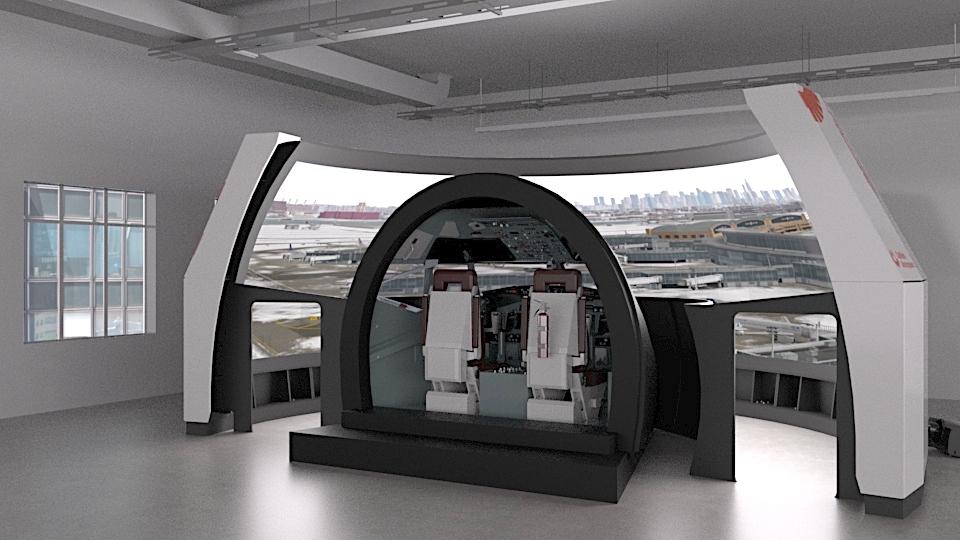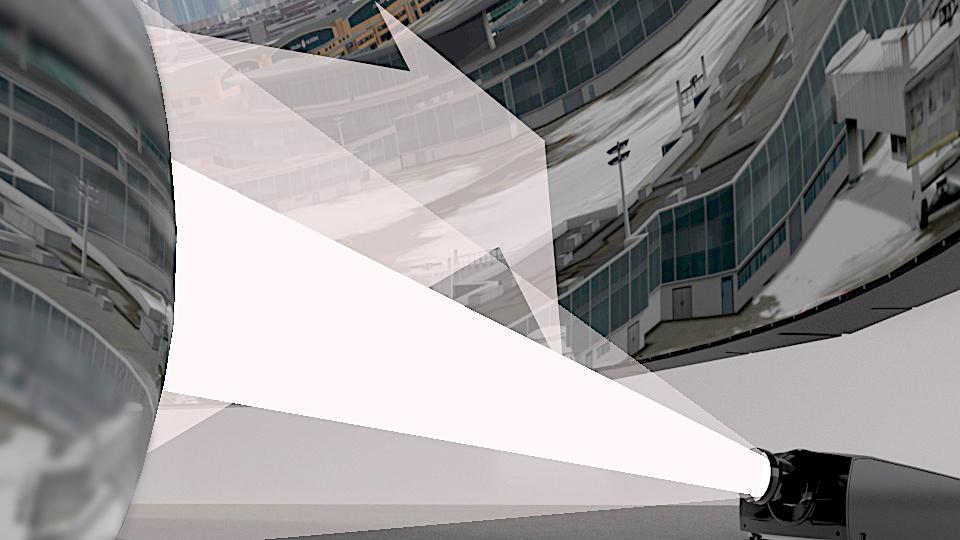
Technology companies with new products to launch often like to say that they are turning established convention on its head, but in the case of Collins Aerospace's new Panorama MFP simulator-display system, which the company is launching to the wider aerospace marketplace at Dubai Airshow, the claim is literal.
“Most of our competitors have a front projection screen up above the cockpit, above the pilot's heads, and a big gantry wall to support projectors and equipment,” says Alex Taylor, the company's senior program manager. “We've turned that all on its head. The front projector screen is now below the pilots, in front of the cockpit.
“That gives us a lot of benefits, not only in the fact that we haven't got to have a supporting wall or gantries, or dangle projectors from ceilings,” he continues. “From a performance aspect, front-projector screens are flawed. You're going to get resolution and luminescence roll-off when you project on a surface that's curving away from you. By mounting the projectors on the floor, your roll-off is at the top, up in the sky, which is less of a concern than if it were at the bottom of the screen, where there's usually a runway, or wherever the pilot’s trying to head.”

Other benefits flow from this basic design decision. Eliminating the requirement for high ceilings and gantries means the system can be installed in smaller rooms; modular system design—MFP stands for Modular Front Projection—allows for smaller, lighter components which can be carried up staircases and through standard doorways. Where other high-end flight-training devices almost need a building to be constructed around them, Panorama MFP can be installed in flight-school classrooms. The prototype, at Collins’ simulation facility in Burgess Hill, England, is in an upstairs room. The possibilities are only just beginning to be explored.
“We are getting a lot of airlines and customers looking at really unique ways of approaching this,” Taylor says. "Can they put mezzanines in sim halls and stack these? Is that a possibility? Because then you'll get more [simulated] aircraft in the same amount of space. We're looking at ways you can enclose the whole system so it could be installed in a sim hall: as it exists today it's very much designed for a classroom environment, but not everyone's going to want that.”





